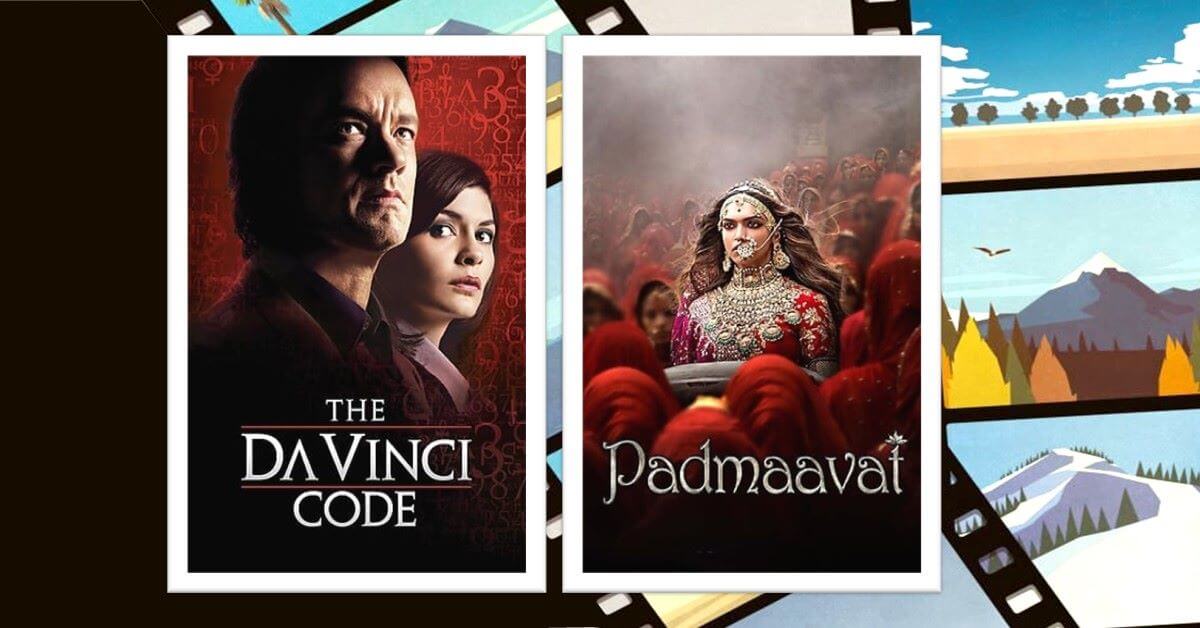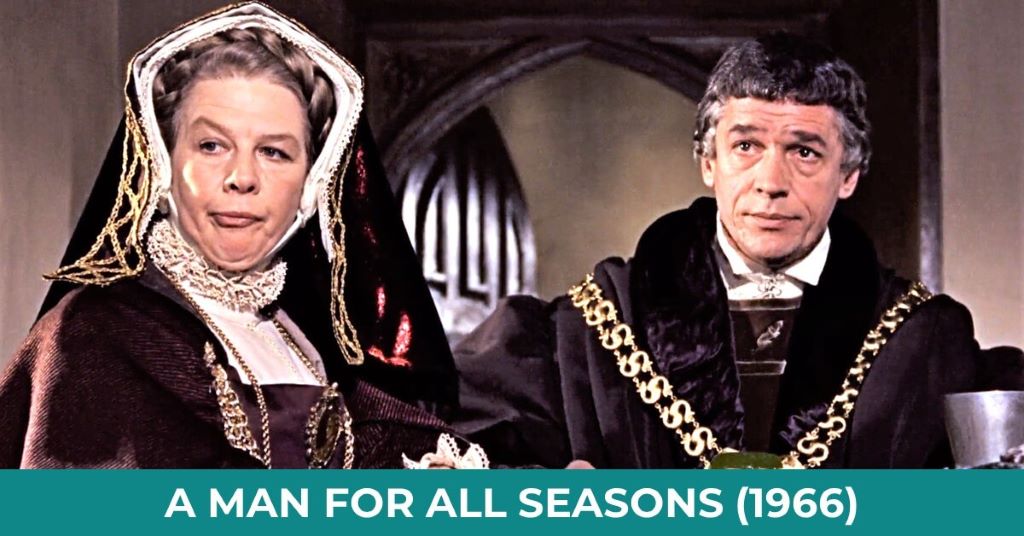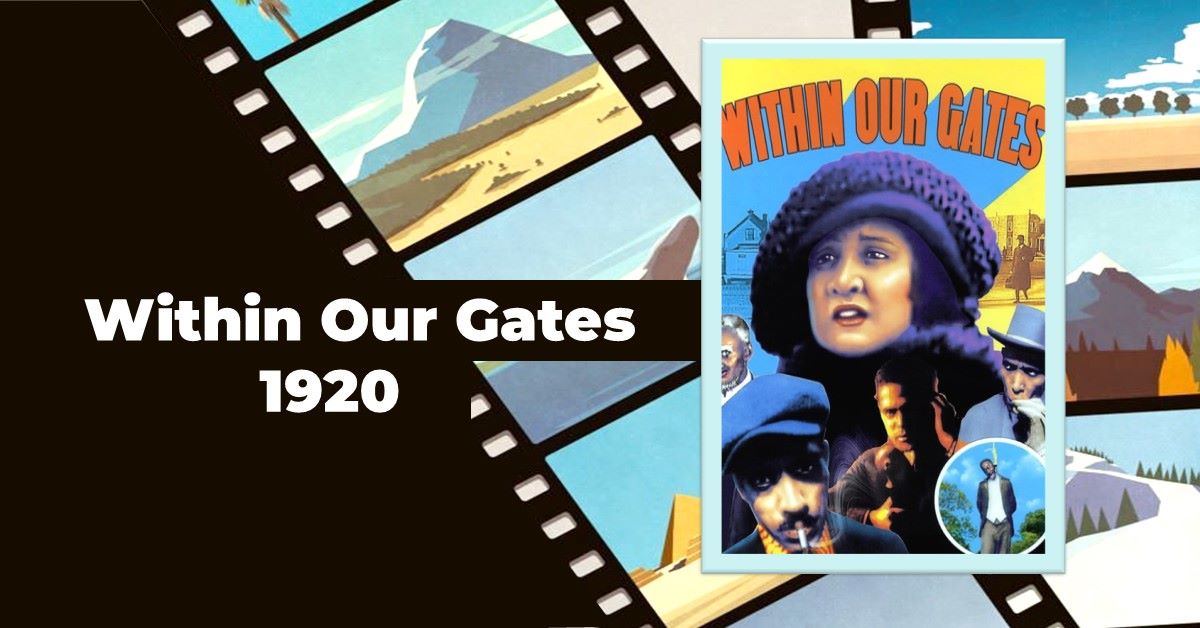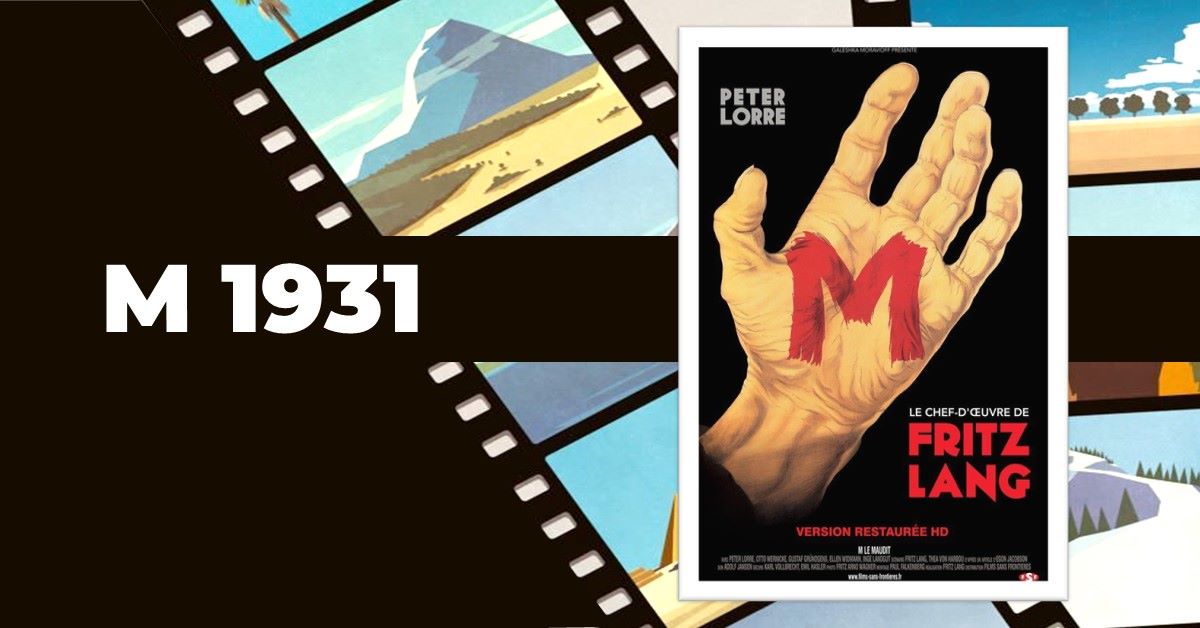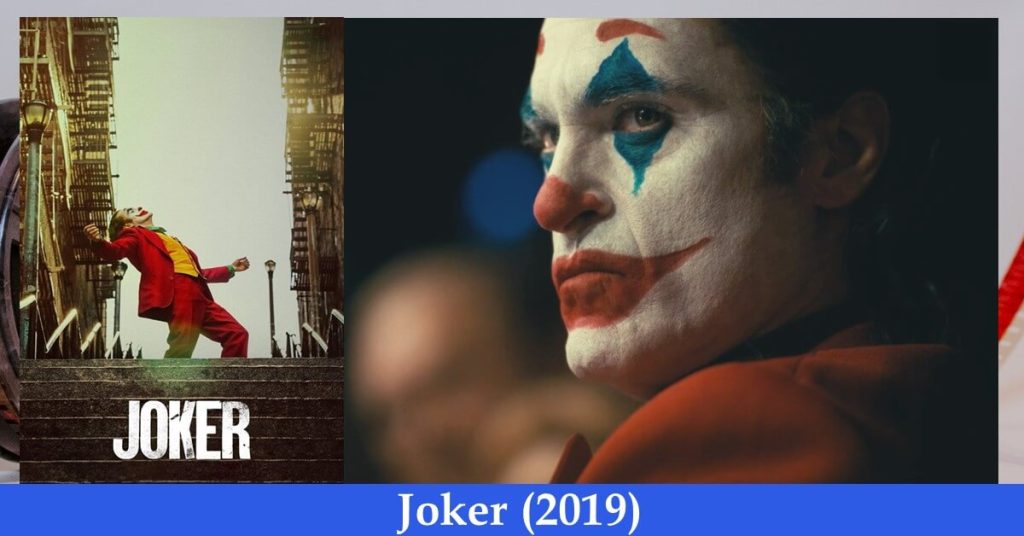Last updated on June 27th, 2024 at 12:55 pm
Schindler’s List is an American historical drama film based on Australian novelist Thomas Keneally’s book Schindler’s Ark that depicts how a Czechoslovakian German Catholic SS member, Oskar Schindler, saved 1,100 Polish Jews during the Nazi Holocaust during WWII.
Being a Nazi party profiteer businessman, who produced pots and pans and later started a munition factory by employing Jewish workers, Schindler risked his money and life to save as many Jewish lives as possible those who could have been killed any moment by Lieutenant Amon Goeth who oversaw the Nazi concentration camps in Poland.
Directed by American Jewish influential director Steven Spielberg and cast by Caroline Goodall (as Emilie Shindler), Ralph Fiennes (as Amon Goeth), Ben Kingsley (as Itzhak Stern), Liam Neeson (as Oskar Schindler), Embeth Davidtz (as Helen Hirsch) and many others.
Schindler’s List won many awards, including Academy Awards, American Cinema Editor Awards, British Academy Film Awards, Chicago Film Critic Association Awards and Golden Globe Awards in different categories. It is one of the 101 best films and 1 of the 1,000 films to watch before death.
However, while watching Schindler’s List, it puts in my mind the picture of the ugliness of religions and the atrocities they are responsible for. The share of teachings that religion emphasises on humanity and kindness is relatively lower than its share of atrocities, violence, intolerance, racism and discrimination. In Schindler’s List, we witness both good and ugly faces of religious hatred towards humanity.
Overview
You might think that only a schizophrenic could move directly from Jurassic Park (1993) to the Holocaust anguish of Schindler’s List.
For that was Steven Spielberg’s production schedule: high-tech junk one minute, a human document for all time the next, worth a staggering 12 Oscar nominations.
The fact is the matter is Spielberg had, been thinking of adapting Thomas Keneally’s novel (Schindler’s Ark in Europe) since 1982. The coincidence with dinosaurs was a coincidence of timing. Yet you still wonder about the mind that could switch gears so brusquely, and effectively, from monsters squashing cardboard humans to the Nazis burning Europe’s Jews by Hitlerian authoritarianism.
Not that seriousness and Spielberg need be incompatible. He has filmed The Color Purple and Empire of the Sun: worthy novels both, although the director’s tendency to sock his points home tarnished them onscreen. Schindler’s List, by comparison, is a model of restraint.
The images are chiefly in crisp black-and-white. For more than three hours you sit, with no wriggling, as the true tale unfolds of Oskar Schindler, Nazi businessman, war profiteer and saviour of more than a thousand Jews who worked in his factory in German-occupied Poland. The central performances of Liam Neeson, Ralph Fiennes and Ben Kingsley may pierce your heart to see the film’s impressive and exemplary details while some scenes could make even a lump of a stone weep. This is Spielberg’s most grown-up film.
Perfectly dressed with a dark and hoarse voice, Liam Neeson conveys mystery and magnetism as the outgoing capitalist who takes over an enamelware factory in Krakow and begins employing Jewish labourers to exploit profits. Ben Kingsley, as Itzhak Stern, is the loyal factory manager who helps prick Schindler’s conscience, while Ralph Fiennes creates an indelible portrait of rampant evil as the debauched SS commandant of the forced labour camp nearby. But as the Final Solution emerges, Schindler bargains his way into moving the factory to the Polish-Czech border, making a list of “essential” workers that totalled over 1,100, all of whom he saved from the gas chambers.
Spielberg has spoken about being a journalist rather than a filmmaker, using hand-held cameras to catch events on the wing rather than heightening the suspense, action or pathos. The unscrupulous Spielberg style may be held back, but it peeps out anyway. Artfulness is obvious in the handling of children, the smart cross-cutting editing, and the dreamy appearance of Auschwitz, nearly attractive in the falling snow. Compared to the horrifying footage gathered in Resnais’ 1956 film Night and Fog and many other documentaries, Schindler’s List takes place in Disneyland.
Only at the very end does the spell perhaps fade. Stripped of his ambiguity, Schindler is now the enthroned hero. Images and words turn stiff, a colour epilogue jars, and the final credit reveals that the film is dedicated not, as expected, to Schindler himself, or the Holocaust’s victims, but to the memory of Time Warner Inc’s former chairman Steve Ross: a strange conclusion.
Life of Oskar Schindler
Schindler, Oskar (1908-1974), German industrialist who with his wife Emilie (1907-2001) protected Jews from the Nazi Holocaust during World War II.
Schindler was born a Catholic in Zwittau, in the Sudeten region of Czechoslovakia. He studied engineering, raced motorcycles, and served in the Czech army before becoming a sales manager for a manufacturer of electrical goods. He married in 1928.
In 1939 he spied for the Germans during trips to Poland, moving to Kraków that October following the outbreak of war to run an enamelware factory. His wife joined him there in 1941. The factory became a safe haven for the predominantly Jewish workforce, who benefited from both Schindler’s human sympathy, and his capitalist irritation at SS brutalities interfering with business. When the Kraków ghetto was destroyed in 1943, and a local concentration camp constructed, he built his own to house his workers, thus allowing him to continue to maintain his cheap workforce.
When the Russian advance caused the Germans to transport their victims to Auschwitz in 1944, Schindler, by bluff and bribery, had his factory and workers moved to Czechoslovakia. No work was ever completed and Schindler and his wife nursed them back to health until they were relieved by the Russians at the end of the war.
After the war, the Schindlers moved to Munich, and then in 1949 to Argentina. When their ranch went bankrupt in 1957, Oskar Schindler left his wife and returned to Germany. In 1961 he was invited to Israel, where a memorial plaque was unveiled on his birthday. Despite frequent hostility from German neighbours, he received the Cross of Merit in 1966, and a state pension in 1968.
A novel by Thomas Keneally, Schindler’s Ark (1982, filmed as Schindler’s List, 1993), brought the wartime activities of the Schindlers to a much wider public. In 1993 Emilie Schindler was belatedly recognized for her role, receiving Israel’s Righteous Among the Nations Award. She finally returned to Germany in 2001, shortly before her death.
In October 1999 documents were discovered among which was found the original “list” naming the 1,200 Jews that Schindler had saved from the Holocaust. There was also a copy of the farewell speech he had made to his workers on May 8, 1945, as the Russian army approached.
The papers also revealed how Schindler had descended into alcoholism in old age, his failed business ventures making him increasingly dependent upon handouts from those he had saved.
Storyline: Schindler’s List
In 1939 in Kraków of Poland, after the Nazi forces defeated the Polish Army, the local Jews were forced into the walled overcrowded Kraków Ghetto.
Oskar Schindler, a member of SS Germany arrives in Krakow from Czechoslovakia in the hope of making a fortune. He bribes Wehrmacht (German armed forces) and SS officials, into obtaining approval for a factory to produce enamelware Deutsche Emailwarenfabrik (D.E.F).
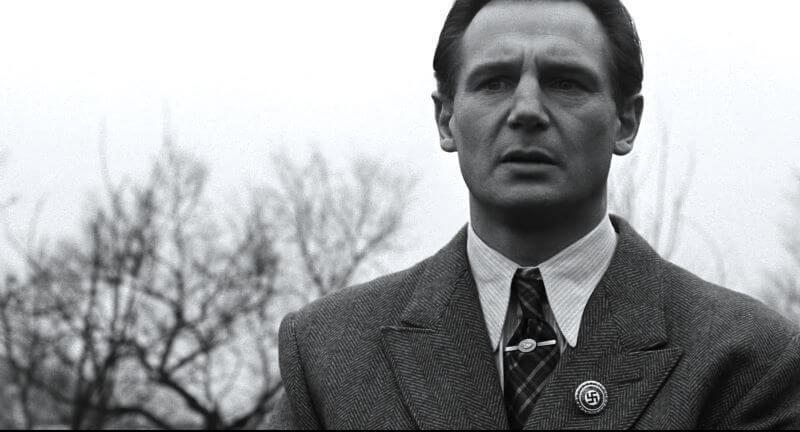
Schindler hires Itzhak Stern, a Jewish official of the Judenrat, a Jewish Council, as a manager who helped him arrange capital from the black marketeers and the Jewish business community. Stern made sure as many as Jews possible as essential workers for the German war effort to prevent them from being taken by the SS to concentration camps or forced labour factories or killed in the gas chambers in Auschwitz.
Meanwhile, Schindler maintains friendly relations with the powerful people of the Nazi party and enjoys wealth and status as “Herr Direktor” or Mr Director.
SS-Untersturmführer (second lieutenant) Amon Goeth came to Krakow to oversee the construction of the Płaszow concentration camps. 10 thousand Jews were killed during the transition from the Ghettoes to the camp when the camp was ready. Children who tried to hide in the hook and nook of the Ghettoes were searched out or killed during the search. A rabbi miraculously survived 10 shooting attempts by Amon’s gun.
The Rabbi was taken outside the Plaszow forced labour metal factory to kill for the reason why he produced so less hinges in so many hours. When tried shooting, the gun’s trigger did not work even after about 10 attempts. Later he was employed in Schindler’s factory.
Schindler was profoundly affected by the massacre, especially by the death of a young girl in a red coat who hid under the bed from the SS forces. She was seen in among the other dead bodies on a wagon carrying corpses for incineration. Schindler carefully maintained his friendship with Goeth and other SS members through bribery.
Goeth often killed people for the slightest reason. He ordered the killing of a woman because she argued with SS men, and killed a boy just because he could not clean the stain on his bathtub.
Because of his cruelty in killing, the prisoners were in constant fear for their lives. Moved by the people’s suffering, Schindler shift his focus from making money to trying to save as many lives as possible. To better protect his workers, Schindler bribes Goeth into allowing him to build a sub-camp. Schindler buys off lives with bribes.
Once when a woman came to his office to request him to employ her elderly parents, who might be sent to the gas chamber, he gave up his watch as a bribe to save their lives.
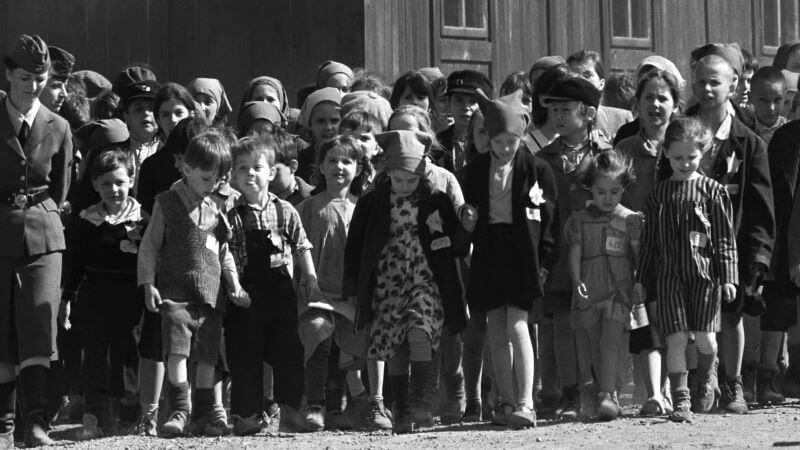
One day Goeth ordered the camp prisoners to be checked by the physicians so they can be separated into sick and healthy. The sicks will be sent to the gas chamber eventually. Goeth is ordered to send all the prisoners to Auschwitz from the Płaszow concentration camp.
As Goeth was planning to move the prisoners to Auschwitz, Schindler asks his permission to move his workers to a munitions factory that he planned to build in Brünnlitz near his hometown of Zwittau in Czechoslovakia.
Schindler made a list of 850 people, men and women, which he bought from Goeth with the money he earned through his business. The people on the list Stern created for Schindler were to transfer to Brinnlitz instead of Auschwitz.
But as the workers were being transferred in separate trains for men and women, to Brinnlitz, the train carrying women and girls was mistakenly redirected to Auschwitz and to the gas chamber. Schindler bought them off from near death by bribing diamonds to Rudolf Hoss, commandant of Auschwitz. At his factory, Schindler forbids the SS guards from killing workers and entering the factory floor without permission and encourages the Jews to observe the Jewish Sabbath while he was seen to attend church.
However, the artillery shells, tank shells, and rocket casings his factory produced failed the quality control test that he said was expected. “Stern if this factory ever produces a shell, I will be very unhappy”, he said to his manager.
It remained operational for seven months but also was a model of no-production of munition while at the same time he spent millions of monies to sustain his workers and buy shells from other companies and supplies as theirs and bribe Nazi officials and eventually he broke.
Schindler ran out of money in 1945, just as Germany surrendered to the Allied Expeditionary Force. He ordered the guards to come into the factory.
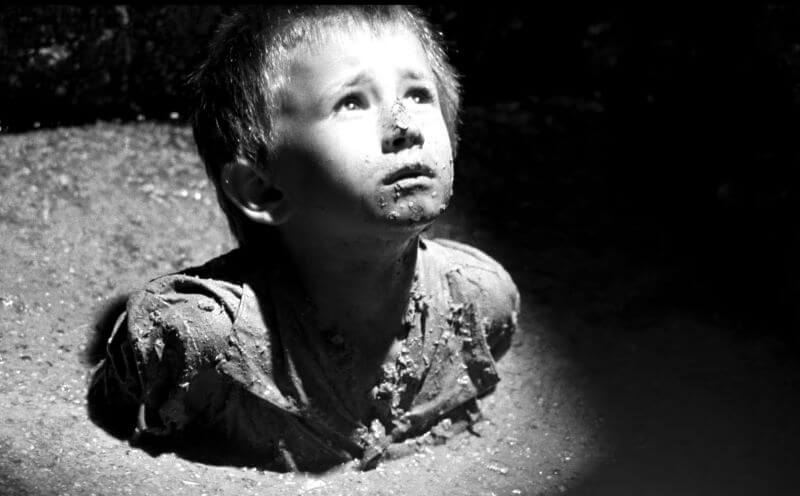
Before leaving the factory to avoid the advancing Red Army, Schindler gathered around all the workers and said he is a profit-seeking member of the Nazi Party. That they were free from then on. And to the SS guards who were ordered to kill the entire workforce, he said they can either kill them or return to their families as men, instead of murderers.
Bidding farewell to his workers, he prepares to head west, hoping to surrender with his car waiting. The workers give him a signed statement attesting to his role in saving their lives and present him with a ring engraved with a quotation from Talmud: “Whoever saves one life saves the world entire”.
Schindler breaks down in tears feeling that he could not do enough. He lamented that with his car, he could have saved 10 more lives, with the ring he could have saved at least one life. comforted by the workers he and his wife left in their car. When the Jewish workers woke up in the open in the morning, they heard a Soviet soldier to announce that they have been liberated. They then walked to a nearby town. The epilogue reveals that Goeth was executed by hanging, and Schindler had failed in both business and marriage following the war. In 1958 he was declared as a righteous man.
In the present, many of the surviving Jews from Schindler’s List and the actors were seen visiting Schindler’s grave and placing stones on its marker.
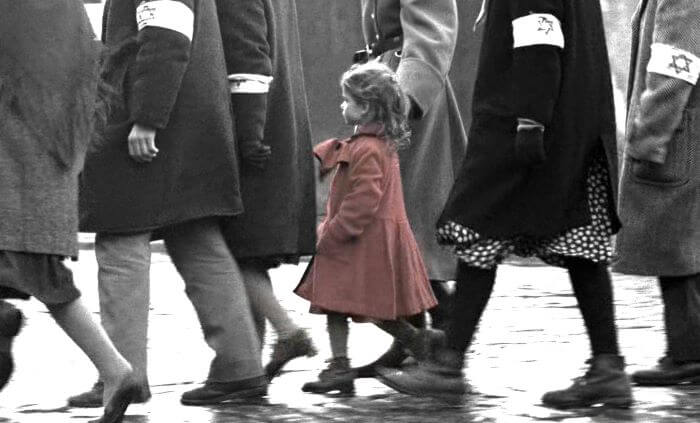
Religions and religious atrocities
There is no stronger force than religion to criminalise humanity, malign human compassion, and separate, kill and hate each other.
It sees humanity through the lens of hatred, discrimination and underestimation. Religion is the source of all forms of discrimination, falsehoods, killing and strange belief systems.
From cradle to grave it teaches humanity who to accept and whom to reject based on ideas, ideology and faiths. The idea of superiority is, I think, primarily originated from religious ideas of higher goods or actual god, or the truth and falsehood, and from overlooking other of different ideologies and otherness.
Muslims are taught to have no relationship with Jews while the Quran forbids friendship with Christians and Jews (O believers! Take neither Jews nor Christians as guardians—they are guardians of each other. Whoever does so will be counted as one of them. Surely Allah does not guide the wrongdoing people. 5:51).
Basically, Muslims are forbidden to have non-Muslim friends. Yet, a section of Muslims believes killing non-Muslims and Muslim converts is okay because it’s a part of a holy war in establishing Islamic supremacy or reign.
Muslims think Hindus are unholy, inferior and lesser human beings bound to the fire of hell. Persecuting and looting wealth is permissible to some Muslims. Other religions in some Muslim countries are not allowed. Along with the curse of casteism, Hinduism considers non-Hindus are untouchables. Some Hindus wash the object that a Muslim touches. Slaughtering cows among Hindus is forbidden; selling, killing and raising swains in Muslim nations is strictly prohibited.
A good Muslim must eat Halal foods only while Jews the Kosher. Buddhists consider cattle-killing is a criminal act. Though without any concept of God, Buddhism is also intolerant of other religions. Some Muslims still do not allow themselves to cross the shadow of Christians. They spit with disdain at ground if they see one.
Jews believe that they are only chosen people of God while Christians consider them enemies because they killed Jesus Christ. The Holocaust, in which Adolf Hitler killed 6 million Jews, was actually a warfare between Catholic Christians and Jews. Fuelled by Antisemitism, Hitler could not accept the fact that Jews were chosen people and disgusted Jewish supremacy the world over.
Killing and destruction of humanity have always been permissible on the question of religion. Violence among the major religions is an age-old phenomenon. Religious violence or violence related to religious faith is acceptable to those who fight for the supremacy of the religion they follow. If Hitler’s killing of 6 million Jews is justified as to stop their supremacy, but then the question is which religion does not want it.
Muslims dream of a world where there would be no other race, religion or opinion than Islam where peace is a guaranteed prospect; Hindus believe in a state or world similar to what Mahatma Gandhi envisioned utopia: Ram Rajya, with lone worshipers of the god Ram.
Christians’ vision of an Augustinian version of ‘Raam Rajya’, the ‘City of God’ where only analogous people will dwell with an analogous ideal. Every religion is struggling to establish its kind of supremacy where in their world and ideals there would exist only a singular religion by dissolving dissimilarities, differences and divisions.
What Hitler did may be justified by some radical Christians which is just one of the other religious pogroms to kill millions over the ages. Hitler killed 6 million Jews, the 19th century Taiping Rebellion between the Christian Taiping Heavenly Kingdom and Buddhist orthodoxy Qing dynasty killed 20 million; nearly 8 million people died in the thirty years struggle between Catholic and Protestant Christians over controlling Germany in the 17th century.
Nearly 6 million Sudanese Muslims died in the Mahdi Revolt in the 19th century, in France 3 million people died in the war between Catholics and Protestants in the 16th century, 200 years of Christian crusade killed 3 million Muslims, the Fang La Rebellion of the 13th century in China between Manichaean Muslims and Taoist killed 2 million.
The Aztec Human Sacrifice of the 15th century cost 1.2 million, the Panthay Rebellion between Muslims and the Qing Dynasty of China of the 19th century claimed a million, the Hindu-Muslim riot during the Partition of India killed 1 million Hindu Muslims, Lebanese Muslims killed 200,000 Christians during 1975-90, 130,000 Catholic and Christian converts killed by Buddhist persecution in Vietnam during 1820-1885.
The clash between Nigerian Muslims and Christians is a regular phenomenon, while the Hindu-Muslim hatred in India and Pakistan, and Bangladesh is an ever-present socioreligious ill. Muslim converts are persecuted or even killed in Muslim-majority nations.
Indian Muslims’ love jihad is directed at Hindu women and aimed to increase the number of Muslims, which causes frequent social unrest. Inter-caste marriage in India means self-incurred death to the lovers, as Hinduism does not permit inter-caste union. Bollywood’s Sairat is an exact picture of it. Sectarian clashes among Muslims are as dangerous as the caste struggle of Hinduism.
Mutual hatred between Wahabis-Sunnis-Shiites-Ahmadiyyas-Bahais and Kurds is an omnipresent occurrence in the Muslim world. Buddhist majority nation Bhutan does not allow conversion or open practice of other forms of religion. The current Rohingya Crisis in Bangladesh is responsible for religion.
Artistic minds are being killed by religious people because their artistic expressions somehow hurt their religious sentiments. A Muslim-majority Pakistan hardly has any minorities. Moreover, a true devout religious man must act to increase the number of followers of his religion.
Human history is repleted with Muslims vs. Christians, Christians vs. Muslims, Muslims vs. Hindus, Christians vs. Jews, Jewish vs. Pagan, Muslim vs. Chinese, Muslim vs. Muslim, and Manichaean vs. Buddhist violence. However, most of the wars were actually religious, instead of territorial. Religion is another form of politics of the poor for the poor and by the poor. A true believer can never be liberal no matter where you live. This form of sentiment is stronger among minorities where religion and religious association can be used against the tyranny of the majority or the dominating religion.
Voltaire once said, “those who can make you believe absurdities, can make you commit atrocities.” The sentiment and absurdity of religion are so forceful that even benevolent people seek out religious identities before helping those who are in need. For them, not humanity, religion, and race come first.
Schindler’s List is a stark reminder of the dark side of humanity where a group of people get killed or justified to be killed just because they had a different faith than their killer. It portrays of a time when the majority religion was used to spread hatred towards others and to gain political objectives through killing people of different ideologies.
Victor Frankl’s A Man’s Search for Meaning gives heart-wrenching details of the concentration camps and the gas chambers. Numerous films and documentaries have been made to disseminate the atrocities of the Holocaust but Schindler’s List is a film that conveys the message of the humanness of a man who belonged to the Nazi SS force, Oskar Schindler.
Whatever he earned as a Nazi business person and whatever he did as a human was directed to save as many Jews as possible. Because of a single man like Schindler 1,100 Jews returned to their homeland as WWII drew to an end. He risked everything.
What would have happened to them and him had there been not corrupt SS members like Aman Goeth is however a different question. For some, it is a hopeful thing that there were some corrupt killers in the SS itself.
In a god-eat-dog situation like the Holocaust, it is equally heart-breaking to witness that one’s faith and belief have nothing to do with saving one’s life when what one always had to was being concerned of one’s own life, instead of others.
And yet, the first impression after watching Schindler’s List you will get is “does the world need religions? Would it be better off without religions?” The answer to the question depends on the level of understating of the danger of religions, religious atrocities and the state of depleting amount of humanity among the devotees.
In a sense, religious people are generous and kind only to fellow religious, or if it goes beyond its purview, it’s because they expect to leave an impression on the beneficiaries to influence them to the faith of the benevolent.
The more religious or devout a person is the more religious discriminatory views he holds. Men can be freed of discrimination, racial judgement and exclusive view of the religion they follow only if they are freed from religious ghosts.
Conclusion
Men want religions to be around because it is profitable to the politicians, for those who live on giving homilies, hypocrites, for disguise, substandard and defunct morality, destitute, misjudged, victims of power, psychologically empty and aimless human beings.
Men’s misuse of natural law gave birth to the unnatural solace, religion, which is a form of association of like-minded people who are oppressed, shrewd to overtake the oppressors.
To the core, religion is the root of all forms of atrocities, a form of insanity that humanity has ever discovered and kept ingenuously running for self-gain, destructive for humanity as a whole. Schindler’s List is a package reminder of all of those.
Schindler’s List Movie 1993 and Colors of Religious Hatred and Bloody Ideologies

10


